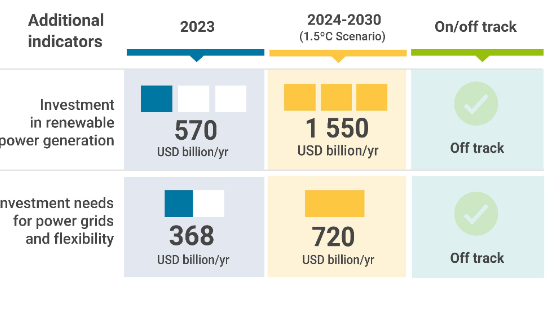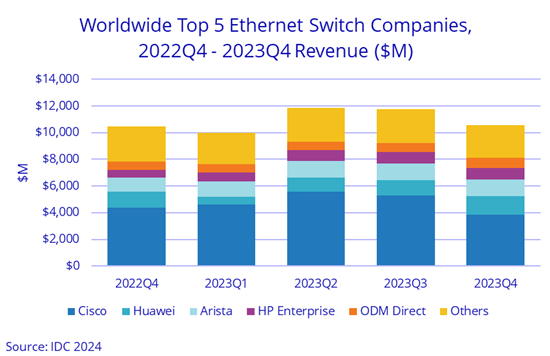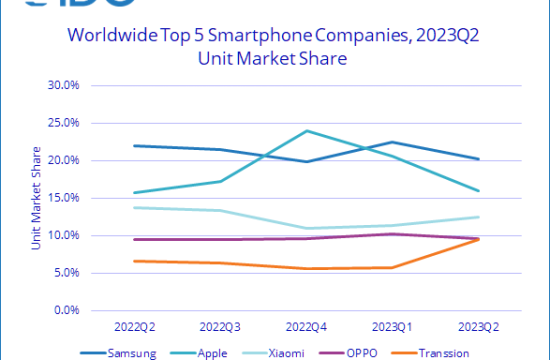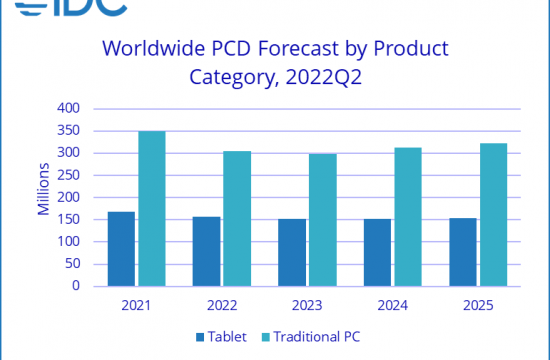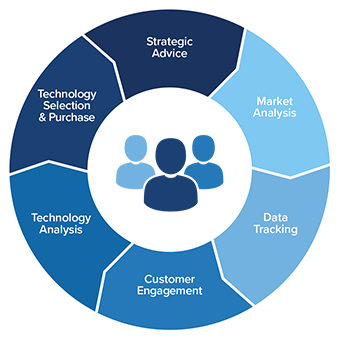 A new update to the International Data Corporation (IDC) Worldwide Semiannual Robotics and Drones Spending Guide forecasts worldwide spending on robotics systems and drones will total $115.7 billion in 2019, an increase of 17.6% over 2018. By 2022, IDC expects this spending will reach $210.3 billion with a compound annual growth rate (CAGR) of 20.2%.
A new update to the International Data Corporation (IDC) Worldwide Semiannual Robotics and Drones Spending Guide forecasts worldwide spending on robotics systems and drones will total $115.7 billion in 2019, an increase of 17.6% over 2018. By 2022, IDC expects this spending will reach $210.3 billion with a compound annual growth rate (CAGR) of 20.2%.
Robotics systems will be the larger of the two categories throughout the five-year forecast period with worldwide robotics spending forecast to be $103.4 billion in 2019. Investments in drones will total $12.3 billion in 2019 but are forecast to grow at a faster rate (30.6% CAGR) than robotics systems (18.9% CAGR).
Robotics spending in 2019 will be dominated by hardware purchases, with nearly two thirds of all spending going toward robotic systems, after-market robotics hardware, and system hardware. Purchases of industrial robots and service robots will deliver nearly 30% of the category total in 2019. Robotics-related software spending will largely go toward purchases of command and control applications and robotics-specific applications. Services spending will be spread across several segments, including systems integration, application management, and hardware deployment and support. Software spending is forecast to grow at a slightly faster rate (21.7% CAGR) than services or hardware spending (19.0% CAGR and 18.2% CAGR, respectively).
Discrete manufacturing will be responsible for nearly half of all robotics systems spending worldwide in 2019, generating $50.2 billion in revenues. The next largest industries for robotics systems will be process manufacturing, resource industries, healthcare, and consumers. The industries that will see the fastest growth in robotics spending over the 2017-2022 forecast are wholesale (31.4% CAGR), retail (29.6% CAGR), and construction (28.1% CAGR). By 2022, IDC expects retail will overtake consumer spending on robotics systems.
“Industrial robotics continues to top the technology investment priorities of manufacturing organizations across all major markets surveyed by IDC in 2018,” said Dr. Jing Bing Zhang, research director, Worldwide Robotics. “While the looming trade war between the United States and China is likely to dampen the market growth slightly in the near term, we expect the growth trend to pick up from 2020 onward.”
“The worldwide market for commercial service robotics will continue to grow at a rate of 20% per year for the coming five years,” said John Santagate, research director for Commercial Service Robotics at IDC. “This growth is due to continued innovation in ease of use as well as the drive for flexible automation across industries. We expect to see growth driven by increased adoption of autonomous mobile robots and collaborative robots being deployed as a means to deliver improvements in capacity, productivity, and efficiency.”
Spending on drones will also be dominated by hardware purchases with roughly 90% of the category total going toward drones and after-market drone hardware. Consumer drones will account for roughly 40% of the category total in 2019 with service drones delivering another 18%. Similar to robotics systems, drone software spending will primarily go to command and control applications and drone-specific applications. Services spending will be led by education and training and will see the fastest growth (35.9% CAGR) over the five-year forecast, followed by software (33.9% CAGR) and hardware (301% CAGR).
Consumer spending on drones will total $5.1 billion in 2019, accounting for a little over 40% of the worldwide total. Industry spending on drones in 2019 will be led by utilities ($1.4 billion), construction ($1.05 billion) and discrete manufacturing ($913 million). The industries that will experience the fastest growth in drone spending over the five-year forecast period will be federal/central government (56.0% CAGR), education (51.0% CAGR), and retail (42.01% CAGR). By 2022, IDC expects the resource industry to move ahead of both construction and discrete manufacturing to become the second largest industry for drone spending.
“The market is working to simplify the use and integration of drones with efforts ranging from enabling new drone applications through improved technological capabilities to understanding the regulatory implications of drones and the viability of these applications. Drones are developing new skills, coupling 3D mapping and fully autonomous navigation capabilities with rapid improvements in battery performance and air-traffic management systems. Drone adopters continue to search for a safe, cost-efficient, and repeatable drone solution that can be easily implemented in a variety of situations and use cases,” said Stacey Soohoo, research manager, Customer Insights & Analysis.
On a geographic basis, China will be the largest region for drones and robotics systems with overall spending of $38.5 billion in 2019. Asia/Pacific (excluding Japan and China) (APeJC) will be the second largest region with $23.3 billion in spending, followed by the United States ($17.2 billion) and Western Europe ($13.0 billion). China will also be the leading region for robotics systems with $36.1 billion in spending this year. The United States will be the largest region for drones in 2019 at $4.8 billion. China will deliver the fastest spending growth in both categories with a five-year CAGR of 24.6% for robotics systems and 63.5% for drones.
The Worldwide Semiannual Robotics and Drones Spending Guide quantifies the robotics and drone opportunities from a region, industry, use case, and technology perspective. Spending data is available for more than 60 use cases across 20 industries in nine regions. Data is also available for 18 robotics systems technologies and 16 drone systems technologies. Unlike any other research in the industry, the detailed segmentation and timely, global data is designed to help suppliers targeting the market to identify market opportunities and execute an effective strategy.
Kewords:
Markets Covered
This product covers the following segments of the robotics market:
- 9 regions: The United States, Canada, PRC, Japan, Western Europe, Central and Eastern Europe, Asia/Pacific, the Middle East and Africa, and Latin America
- 60+ use cases: Assembly, welding and painting, automated production in mining, bottling pick and pack, shelf stocking, filmmaking, construction site inspection, surveillance, aerial photography, and more
- 20 industries: Banking, insurance, securities and investment services, discrete manufacturing, process manufacturing, construction, resource industries, retail, wholesale, professional services, personal and consumer services, transportation, healthcare provider, federal/central government, state/local government, education, telecommunications, media, utilities, and consumer
- 18 robotic systems technology markets: Across hardware, software, and services categories; Hardware — effector, sensor, consumer robot, industrial robot, service robot, enterprise network, server, and storage; Software — command and control, network infrastructure software, and specific applications; Services — application management, education and training, facility modification, hardware deployment and support, network consulting, management and integration, operations and technology consulting, and systems integration
- 16 drone systems technology markets: Across hardware, software, and services categories; Hardware — Effector, sensor, consumer drone, industrial drone, service drone, server, and storage; Software — command and control, network infrastructure software, and specific applications; Services — application management, education and training, hardware deployment and support, network consulting, management and integration, operations and technology consulting, and systems
Subjects Analyzed
Throughout the year, this product will address the following topics:
- The definition of the robotics and drone market from a type and use case perspective
- The size of the robotics and drone opportunity by region, industry, technology and use case
- Market drivers impacting robotics and drone growth
- How robotics relates to the cognitive computing market
Key Questions Answered
Our research addresses the following issues that are critical to your success:
- What are the different types of robots and drones which comprise the landscape?
- How will robotics and drone adoption vary by region, use case, and industry?
- How will the robotics and drone market grow over the forecast period by industry and use case?
-
Which vertical markets present the greatest growth opportunity for robotics and drone technology?


